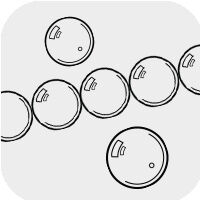Corundum
Meaning and Properties
Corundum History
Corundum has been historically known by many names: ruby, sapphire, hyacinthos, asteria, adamant, etc. Originally named "corinvindum" in 1725, this gemstone's current name was derived from the Sanskrit word kuruvinda (meaning "ruby"). The spelling "corundum" was first used in 1794.
Corundum is somewhat the off-brand version of the more "name brand" gemstones ruby (the red corundum) and sapphire (the other colors). Corundum is very hard, tough and stable, making it ideal for a variety of industrial uses, especially materials which do not reach gem grades. A black variety, known for its use as a high-quality abrasive, is the emery that emery boards were originally named for.
Tiny shaped pieces of corundum were used in Swiss watches during the mid-1800s, as their durability and wear-resistance made them ideal for long-term use. In this use, they were called "jewel bearings"--watches using them were said to have "jewel movement"--so this longevity and precision added to the reputation of Swiss watches.
Corundum is easily synthesized for industrial and manufacturing purposes, and has been for almost two centuries. Its widest use is for hardening heavy-duty concrete floors and for non-skid materials on bridges. Colorless transparent lab-grown corundum is used in electronics, scratch-resistant optics, satellite parts and laser components. Your cellphone's "crystal" screen is probably synthetic corundum.
Corundum Metaphysical Properties
Corundum is said to promote insight into the unknown, promoting wisdom and wise choices. It is also believed to subdue emotional tumult by relieving tension, releasing anger in a positive manner and reducing the presence of negative thoughts. It is also believed to enhance intuition.
Some practitioners use corundum by color, by assigning different colors of this stone to the appropriately colored chakras, and highlighting those characteristics. In addition, while it is not a birthstone in itself (as ruby and sapphire are), corundum has been affiliated with the zodiac sign Sagittarius.
Corundum Geological Properties
The only gemstones higher on the Mohs hardness scale than corundum are moissanite (at 9.25) and diamond (at 10). Corundum is also unusual for its density--unusually high for a transparent material--making it ideal for a range of uses previously restricted to glass and leaded crystal.
Just as there are star rubies and star sapphires, there are star corundums--although they, too, are a rare form of the stone. Natural corundum is typically opaque or semi-opaque, as transparent stones would be designated as ruby or sapphire.
Noteworthy deposits of corundum occur in Myanmar, Thailand, Madagascar, Sri Lanka and India. Other sources are Afghanistan, Vietnam, Greenland and multiple sources in the United States, including the states of Montana, Colorado, California and North Carolina. Industrial quality emery was once mined in Ontario, Canada, and New York and Massachusetts in the USA.
|
|
|
|
|
|
|
|
|
|
|
|
|
|
|
|
|
|
Proper Care of Corundum
Corundum is hard and tough--but not indestructible. It can usually be safely cleaned in either steam or ultrasonic cleaners, unless harboring hidden fractures or cavities. If in doubt, use lukewarm soapy water and a soft brush; rinse well and pat dry. Corundums can be sensitive to mild acids, so remove corundum jewelry before perspiring.
To learn more about corundum and other gemstones, order your copy of Walter Schumann's revised and expanded edition of Gemstones of the World.
Designing with Corundum
With its hardness and durability, corundum can be used in jewelry designs that see high traffic or likelihood of impacts: bracelets, rings, anklets, etc. Use corundum according to its color. If red, consider designing as if it were ruby. If blue, the uses of sapphire are a good guideline. Colorless corundum, of course, can go anywhere!
View more resources featuring corundum, including Design Ideas, Videos, Tutorials and more!
Shop for Corundum
**Please note that all metaphysical or healing properties listed are collected from various sources. This information is offered as a service and not meant to treat medical conditions. Fire Mountain Gems and Beads® does not guarantee the validity of any of these statements.
How did you like this resource? Your feedback helps us provide resources that matter to you most.
Copyright Permissions
All works of authorship (articles, videos, tutorials and other creative works) are from the Fire Mountain Gems and Beads® Collection, and permission to copy is granted for non-commercial educational purposes only. All other reproduction requires written permission. For more information, please email copyrightpermission@firemtn.com.

